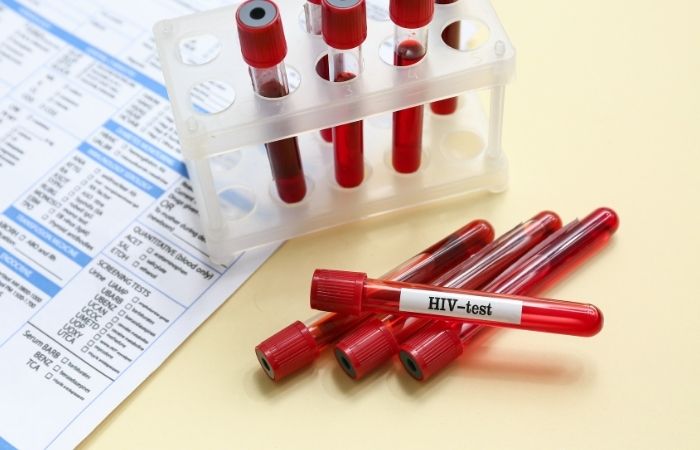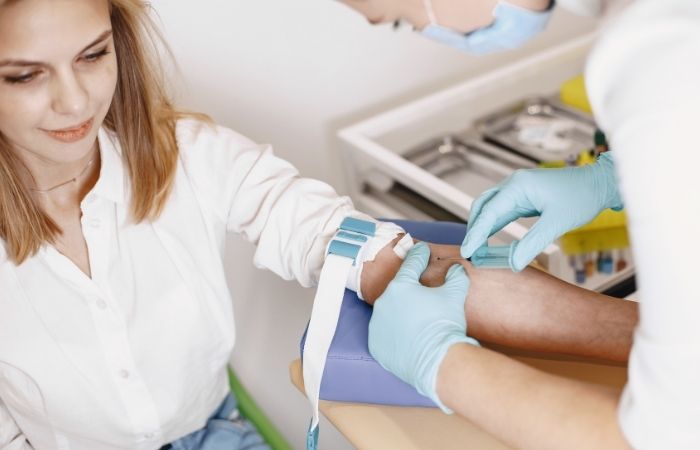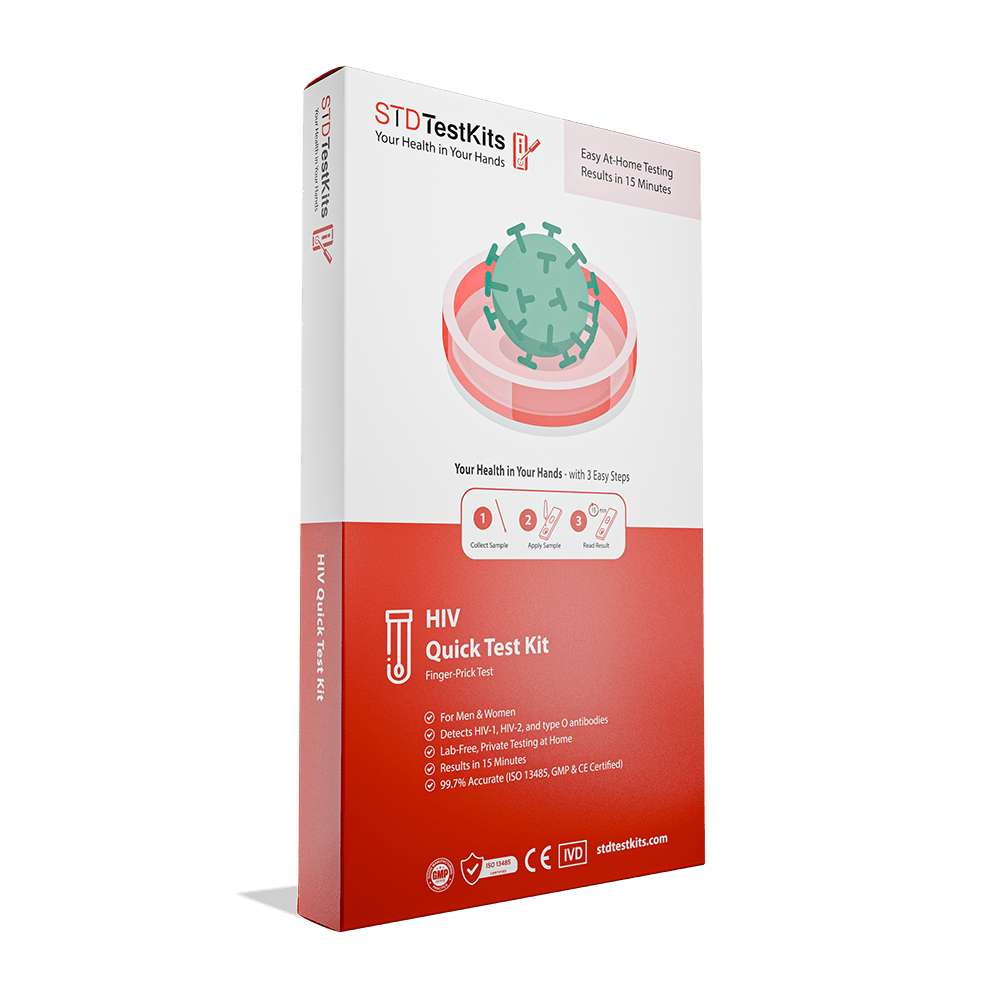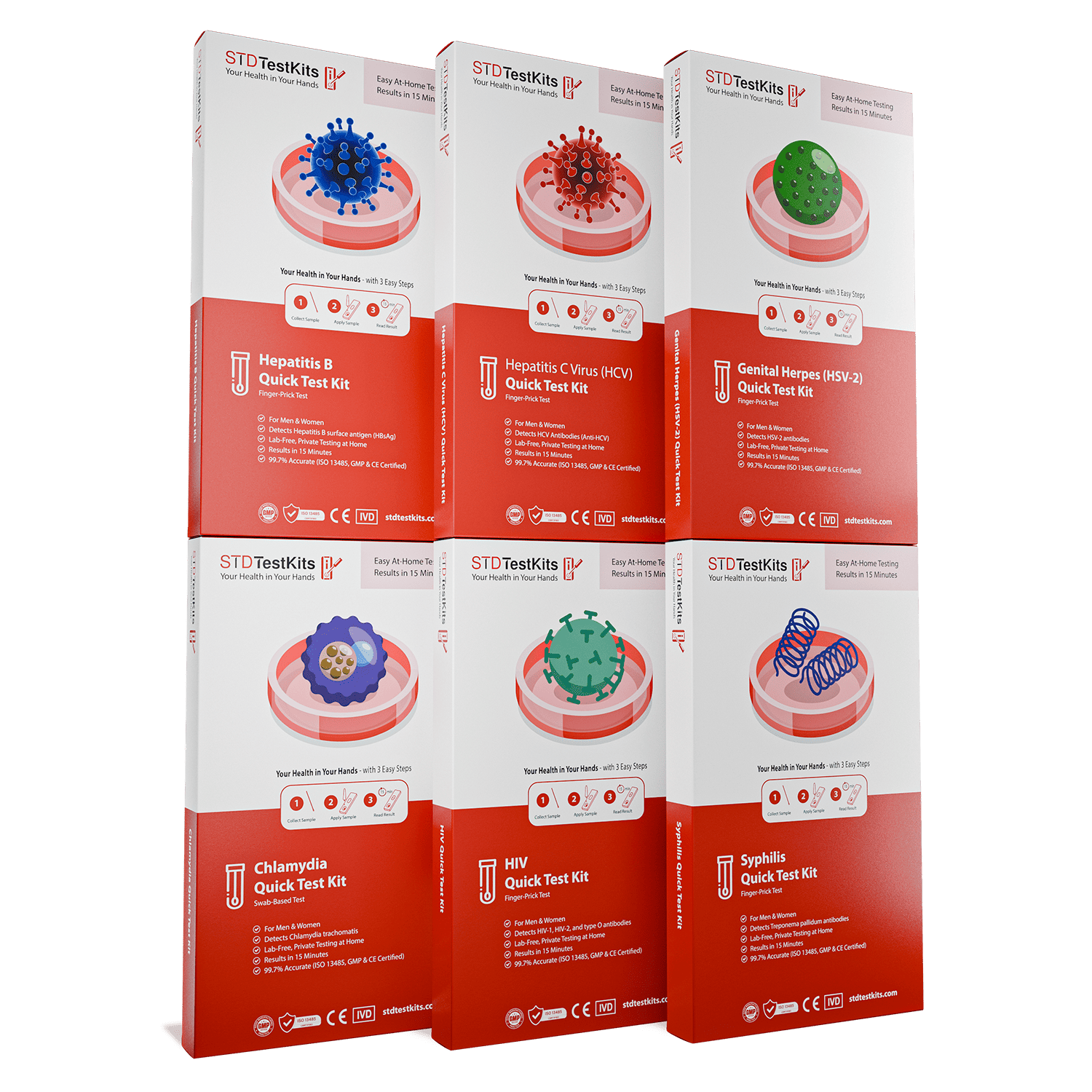Grindr Just Shipped Over a Million HIV Self-Test Kits, Here’s What That Means for You
Quick Answer: Depending on the test, the best time to test for HIV is 28 to 45 days after possible exposure. Some tests can find HIV earlier, but they might miss infections if they are done too soon. If you test positive in the first two weeks, you may need to test again.
Why This Article Matters (Especially If You're Panicking)
If you’re reading this, chances are you’re feeling overwhelmed. Maybe it’s been a few hours or a few days since something went wrong. You might feel totally fine physically but mentally spiraling. Or you’re feeling sick and wondering whether what you’re experiencing is anxiety, the flu, or early HIV symptoms.
This article is for people who are scared, confused, and trying to do the right thing. Maybe you live in a rural area without easy clinic access. Maybe you're not out to your family, or you just don’t want anyone knowing what you're dealing with. Testing for HIV isn't just about risk, it's about taking care of your body, your peace of mind, and the people you might love next.
We’ll break down everything you need to know about testing too early, getting it right the first time (or at least the second), and why a negative test doesn’t always mean you're in the clear. We’ll also show you how to retest confidently, how different tests compare, and what to do if symptoms don’t match your result.
What Counts as an HIV Test (And Why It Matters)
There are several types of HIV tests, and the one you take affects how early it can detect the virus. Most people don’t realize this, and it’s why so many get false peace of mind or panic over unclear results. Broadly, HIV testing falls into three categories:
The Antigen/Antibody combo test (sometimes called a 4th generation test) looks for both HIV antigens (proteins produced by the virus) and antibodies (your immune system’s response). This is the most common test used in clinics and some lab-based mail-in kits. It’s typically accurate starting around 18 to 45 days after exposure.
The Antibody-only test looks just for antibodies and takes longer to become accurate, typically 3 to 12 weeks. Rapid finger-prick tests at home or in some community centers fall into this category. They’re convenient but have a longer window period.
The NAAT (Nucleic Acid Amplification Test) is highly sensitive and can detect HIV as early as 10–14 days after exposure by detecting the virus’s RNA. It’s usually used in high-risk or early-symptom situations but isn’t widely available for home use.

People are also reading: Why Nevada’s STD Surge Isn’t Just a Vegas Problem (But It Should Scare Us All)
HIV Window Periods: What You Need to Know
One of the most misunderstood aspects of HIV testing is the window period, the time between exposure and when a test can reliably detect the virus. This is not the same as the incubation period (the time between infection and the appearance of symptoms). You could have symptoms before a test turns positive, or no symptoms at all. That’s why timing is everything.
Figure 1. HIV testing methods and their detection windows. These ranges are averages based on CDC and WHO data. Your body may respond sooner or later depending on immune factors.
Why do these ranges vary so much? Because everyone’s body is different. One person may develop detectable antigens in 14 days; another may not until day 28. Stress, illness, medications, and immune suppression (including pregnancy or HIV PrEP/PEP use) can all shift your response timeline.
What matters most is not how fast you test, it’s whether your test was timed at the right moment for it to catch what’s really going on.
“I Tested Negative at 5 Days. Then Came the Symptoms.”
Jordan, 27, thought he was in the clear. Five days after a drunken hookup with someone he didn’t know well, he bought an over-the-counter HIV rapid test. It came back negative. He felt relieved, until the fever, night sweats, and sore throat hit around day 12.
“I convinced myself it was COVID or stress or anything else. But something didn’t feel right. I retested at 30 days, and that’s when it came back positive.”
Stories like Jordan’s are more common than you might think. Early HIV symptoms can mimic common viruses, fatigue, rash, swollen lymph nodes, sore throat. But they aren’t a reliable sign of infection, and neither is their absence. Some people experience intense symptoms early; others feel nothing for months.
This is why the CDC recommends that anyone who tests negative within the first month of possible exposure should consider a follow-up test between 28 and 90 days. A single early negative is not a definitive result, it’s a snapshot in time, not a guarantee.
If you’ve recently tested negative but something still feels off, symptoms, guilt, partner pressure, or gut instinct, trust yourself enough to retest. The science says it’s not paranoia; it’s precaution.
Timing Your Test: A Real-World Decision Tree
Here’s how to think through your own timing, based on how long it’s been since exposure. This is written as if we’re sitting together, talking it out, not handing you a chart you have to interpret alone.
If it’s been less than 7 days, you're probably still in the viral eclipse phase. No test will be reliable yet, though a NAAT may pick up HIV earlier than other options. If symptoms are severe (especially fever, ulcers, or rash), or if the exposure involved assault, you should seek immediate clinical care. Otherwise, wait until day 14 to test with a lab test, and plan to retest again at 28 days.
If it’s been 7 to 13 days, you're in a gray zone. A lab-based 4th gen test might start picking up infections, but a negative result here should not be seen as conclusive. Think of it as your first checkpoint. Retest again at or after day 28. Rapid home tests are unlikely to be accurate this early.
If it’s been 14 to 28 days, now you're in the early reliability window. A 4th gen test is becoming more dependable, especially if taken in a clinical setting or with a mail-in lab kit. Rapid tests may still miss infections. This is a strong time to test if you’re nervous, but build a plan to retest in 2 to 4 weeks if this is your first result.
If it’s been more than 28 days, you’re now in the gold zone for testing accuracy. Rapid, lab, and NAAT options are all more reliable at this point. If you’ve had no new exposures, a negative result is very reassuring. But if you've had multiple partners or ongoing risks, plan to test again at 45–90 days for full confidence.
If you're unsure which test is best for your window, or want to test discreetly, check out the HIV Rapid Test Kit options available for home use. They’re FDA-approved and designed for private, fast results when you need clarity now.
Table: HIV Test Accuracy by Time Since Exposure
Figure 2. HIV test accuracy increases over time. If you're still inside the early window, think of your first test as a baseline, not a final answer.
At-Home Test vs Clinic vs Mail-In: What’s Right for You?
Sometimes the choice of test isn't just about science, it’s about shame, distance, cost, or timing. Maybe the nearest clinic is two hours away. Maybe you’re not out to your family, or you're worried someone will see your name on a form.
At-home rapid HIV tests offer a way to check discreetly, often within 20 minutes. They’re ideal for privacy and immediacy, but less sensitive in early infection windows. If it’s been fewer than four weeks, this kind of test might not pick up a recent exposure. Still, if you're past that mark or just want a fast read, they’re valid tools.
Mail-in lab kits give you access to high-sensitivity 4th gen testing without leaving home. You collect your sample (usually a finger-prick or oral swab) and send it to a certified lab. Results come back in a few days, and many services allow you to speak with a clinician about your results.
Clinic tests remain the gold standard, especially if you need NAAT-level early detection, access to follow-up care, or guidance based on complex exposure scenarios. But they come with their own barriers: appointments, insurance, transportation, fear of being seen.
There’s no one-size-fits-all choice. The best test is the one you can actually take, and feel safe taking. If you're struggling with the decision, try a layered approach: test now with what you have access to, then retest at a better time window with a higher-sensitivity method.

People are also reading: Cold Sore or Herpes? Why That Blister Deserves a Second Look
Should You Retest? Here’s How to Know
If you’ve tested once and feel unsure, you’re not alone. Many people take an HIV test just to calm their nerves, but when that test comes back negative too early, it can create even more anxiety. You start Googling “false negative HIV test” and second-guessing every symptom you feel.
Here’s the truth: False negatives can happen, especially if you test during the early window period. That doesn’t mean the test is broken or that your case is special, it means your body may not have produced detectable levels of antigens or antibodies yet. That’s not a fault of the test; it’s biology.
If you’re still within the first 28 days post-exposure and you took a rapid test or antibody-only test, retesting is not just smart, it’s necessary. Most clinicians will recommend a follow-up test at 6 weeks, and again at 3 months, if risk was significant.
If you were on PEP (post-exposure prophylaxis) after your exposure, the timing shifts slightly. You’ll need to wait until at least 4 weeks after finishing your 28-day PEP course to test, because the medication may delay the detectability of the virus. That means a total wait time of around 8 weeks after your initial risk.
Whether it’s your first test or your fifth, always ask yourself: Has it been long enough? Has there been any new exposure since my last test? What kind of test did I use? If there’s doubt, retest. If the thought of another wait feels unbearable, that’s completely normal. But remember, testing is not just a medical act. It’s a way to take back control of your life.
Need a discreet way to retest? Order a combo test kit that checks for multiple STDs including HIV, all from home, no lab visit required.
Your Results, Your Privacy, Your Power
Let’s talk about what happens after you take the test. Maybe you’re alone in your room, phone in one hand, heart pounding. Or you’re in a clinic bathroom, afraid to look at the little cassette window. No matter where you are, know this: the result belongs to you.
At-home HIV test kits are packaged discreetly, often in unmarked boxes, and don’t require insurance, appointments, or even your name. Results are yours alone, unless you choose to share them. Some mail-in options include telehealth support, but even those are typically confidential and HIPAA-compliant.
If privacy is a major concern for you, maybe you live with family, or you’re worried about being outed, plan ahead. Use an alternative shipping address. Choose a test that fits into your schedule. And remember, there is no shame in wanting to keep your health decisions private.
The peace of mind that comes from knowing your status, whether positive or negative, outweighs the fear of opening that package. You deserve to know. And you deserve to test on your own terms.
What Happens If the Test Is Positive?
Let’s take the fear out of this for a moment. If your test comes back positive, your life isn’t over. In fact, modern HIV treatment means that people diagnosed today can live full, healthy lives with zero transmission to partners, thanks to medications that bring viral load to undetectable levels.
But first, yes, it will feel like a lot. You might cry. You might go numb. You might walk around your apartment in circles or throw your phone across the room. That’s normal. You’re allowed to feel whatever you feel.
When you’re ready, confirm the result. Most at-home or rapid tests require a follow-up lab test. This isn’t because they’re unreliable, it’s because treatment is a big deal, and the system wants to be absolutely sure before you begin. Your local health department, Planned Parenthood, or a telehealth service can guide you.
After confirmation, you’ll be connected to care. That could mean starting medication, talking to a case manager, or receiving resources on how to notify partners. You’re not alone. HIV is not what it was in the 1980s or even the early 2000s. With today’s treatment, you can live your life, fall in love, have sex, have kids, whatever your goals may be.
If you need to test a partner or retest after treatment, discreet options like this combo STD kit can help.
FAQs
1. Can I test for HIV the day after a hookup?
You can, but you probably shouldn’t expect much clarity from it. Most HIV tests won’t catch the virus that early, it’s like trying to spot a sprout the day after planting a seed. If you're desperate for peace of mind, go ahead and test as a starting point, but set a reminder to test again in a few weeks when results will actually mean something.
2. What’s the difference between the HIV incubation period and the window period?
That's a good question, and yes, they are different. The incubation period is the time it takes for symptoms to show up, if they do. The window period is the time it takes for a test to be sure it can find the virus. You might have symptoms before a test comes back positive, or you might not have any symptoms at all and still be positive. That's why the timing of the test is more important than the symptoms.
3. My test was negative at two weeks. Am I in the clear?
Not quite. Two weeks is a little early for most HIV tests to be fully accurate, especially rapid ones. Think of it as the halftime report, not the final score. If you're still within that 4 to 6-week window, retesting is the safest move.
4. How accurate are HIV rapid tests?
Honestly? Pretty solid, if you use them after the right amount of time. Most at-home HIV rapid tests are over 90% accurate at 12 weeks post-exposure. But take one at week two, and you might as well be flipping a coin. Timing makes or breaks the accuracy.
5. I feel totally fine. Do I still need to test?
Yes, because HIV can be completely symptomless in the early stages. You might feel great, hit the gym, go to work, and still carry the virus without knowing it. That’s why testing matters, even when your body feels chill. Especially if you’ve had a recent risk.
6. Can anxiety make me think I have HIV symptoms?
Oh, absolutely. Anxiety can mimic a lot: night sweats, fatigue, even nausea. It’s a master shapeshifter. That doesn’t mean your fear isn’t valid, it just means symptoms aren’t always the best guide. The test is. Let it cut through the noise in your head.
7. Do I need to retest if I used PEP?
Yes, for sure. PEP can slow down the body's response to the virus, so even if you were infected, your test might not show a positive result right away. The rule of thumb is You should wait at least four weeks after finishing PEP before you take a test that you can trust.
8. What if I just want to test privately, no clinic, no questions?
Totally fair. You’ve got options. At-home test kits are discreet, accurate (when timed right), and no one needs to know unless you tell them. They ship in plain packaging and don’t require insurance, ID, or awkward conversations.
9. Can I infect someone even if I just got HIV yesterday?
Yes, it’s possible. HIV is often most contagious during the early weeks after infection, even before you test positive. If you think you were exposed recently, avoid sexual contact or use protection until you’ve tested and know your status for sure.
10. I’m scared to test. What if it’s positive?
That fear is real, and normal. But here’s the truth: a positive result today is not a death sentence. HIV is treatable. With meds, your viral load can go undetectable, which means you won’t pass it to partners. Knowing gives you power. You don’t have to walk into a clinic alone, and you don’t have to figure it out in one day. You just have to start.
You Deserve Answers, Not Assumptions
HIV testing isn’t just a medical task, it’s an emotional decision. Whether you’re shaking in a pharmacy parking lot or quietly clicking through online options, know this: the act of testing is powerful. You’re not just protecting your health; you’re choosing peace over panic, facts over fear.
If your gut is still uneasy after a recent risk, don’t sit in silence. This at-home combo test kit covers HIV and several other common STDs, giving you a broader picture, fast and privately.
How We Sourced This Article: We combined current guidance from leading medical organizations with peer-reviewed research and lived-experience reporting to make this guide practical, compassionate, and accurate.
Sources
1. Clinical Testing Guidance for HIV | CDC
2. Selecting an HIV Test: A Narrative Review for Clinicians and Public Health
3. Probability of a false‑negative HIV antibody test result during the window period
5. Time Until Emergence of HIV Test Reactivity Following Infection With HIV
6. How accurate are fourth‑generation combination tests for HIV diagnosis?
7. Laboratory diagnosis of HIV: a contemporary overview
8. HIV – STI Treatment Guidelines | CDC
About the Author
Dr. F. David, MD is a board-certified infectious disease specialist focused on STI prevention, diagnosis, and treatment. He blends clinical precision with a no-nonsense, sex-positive approach and is committed to expanding access for readers in both urban and off-grid settings.
Reviewed by: Dr. Amy Navarro, MPH | Last medically reviewed: October 2025
This article is for informational purposes and does not replace medical advice.







